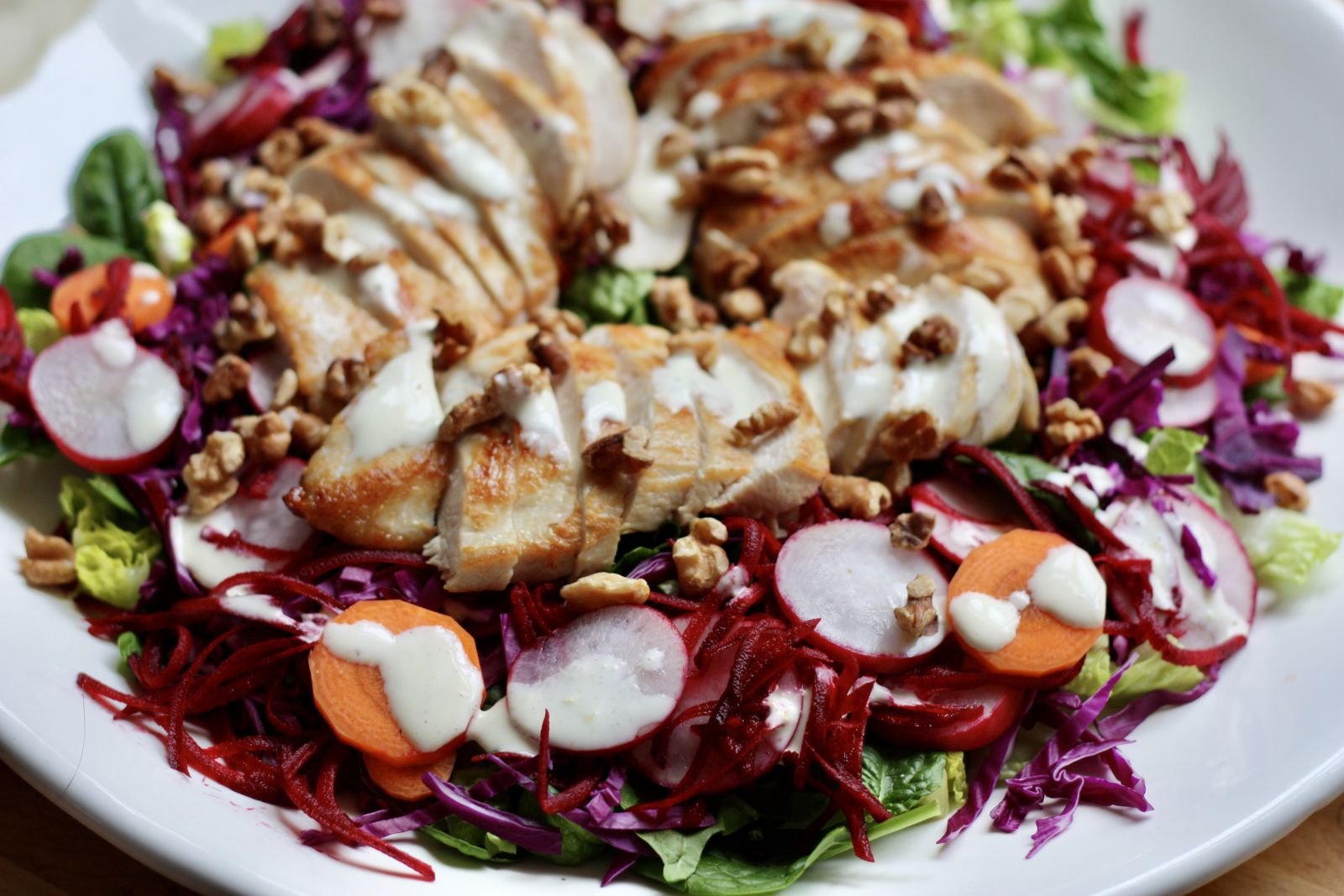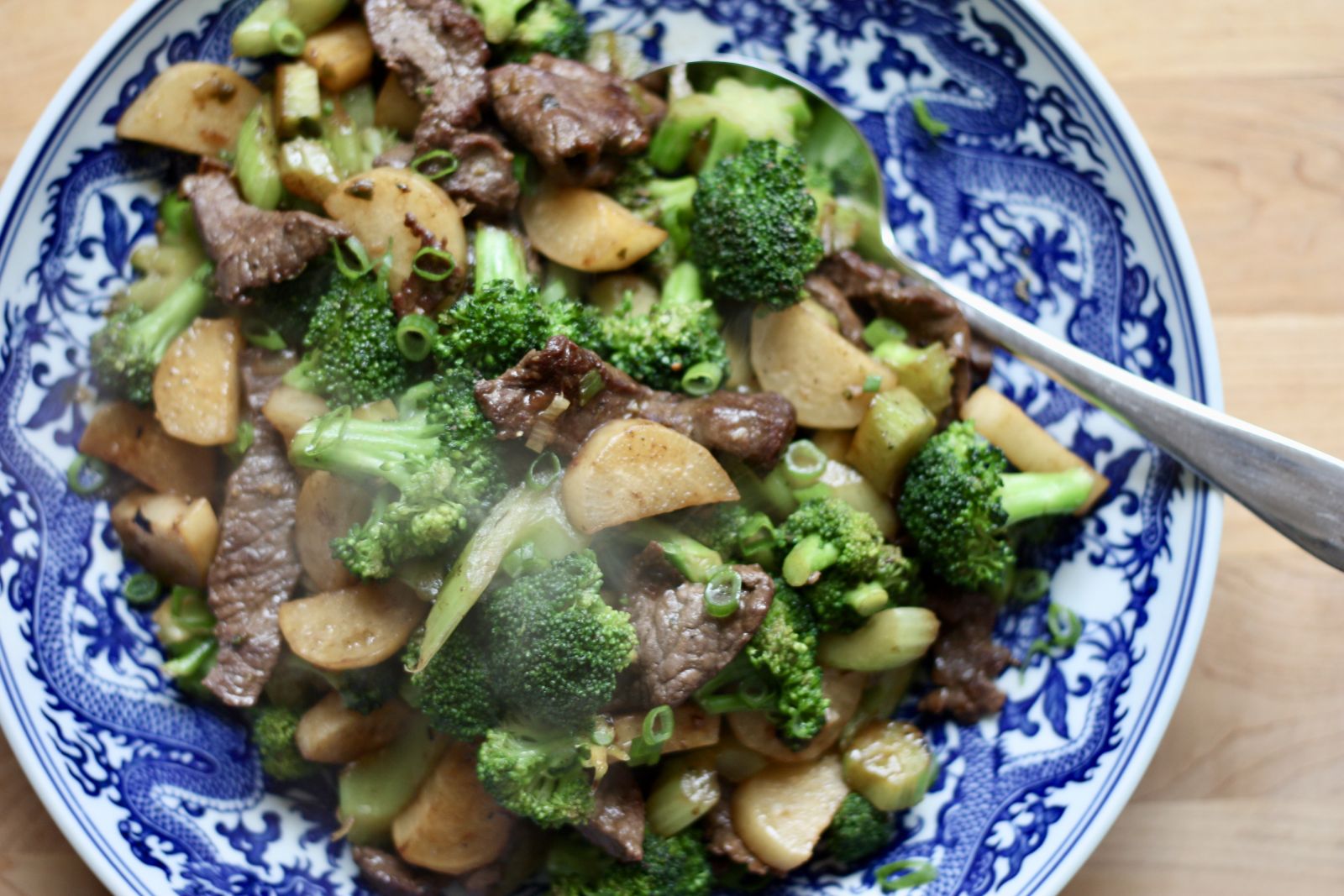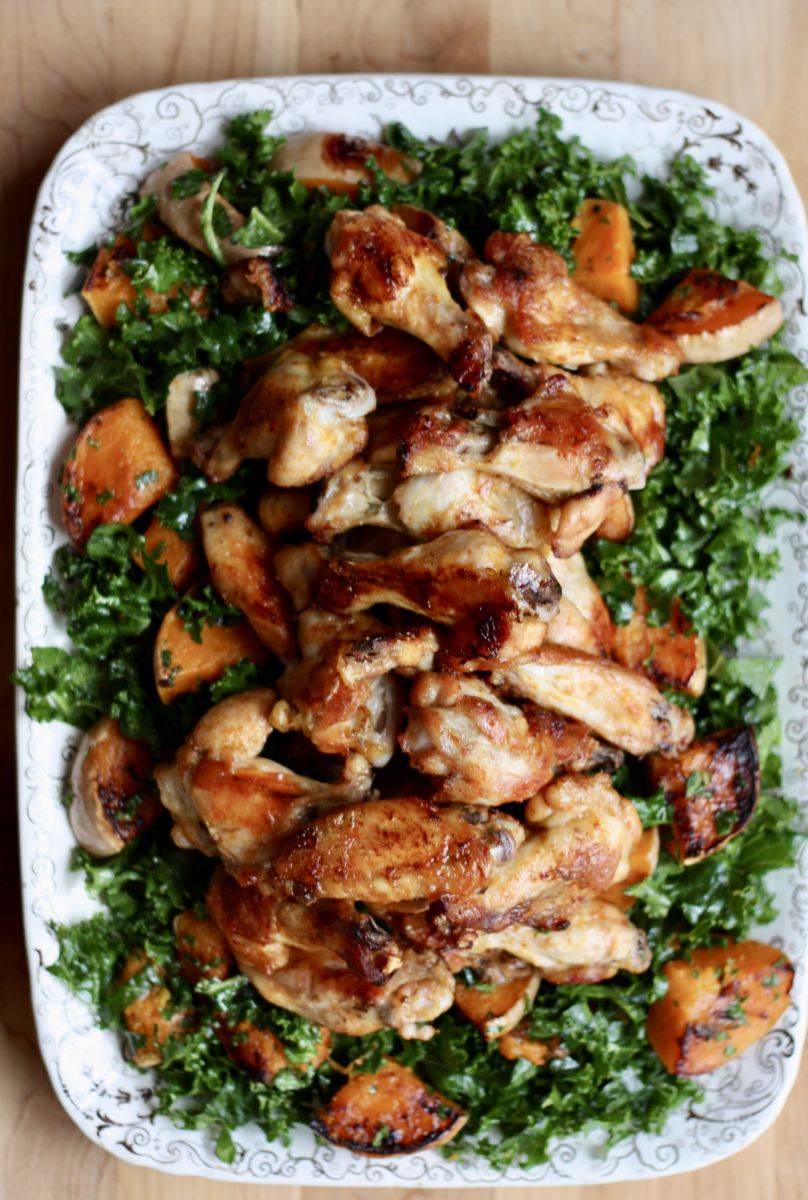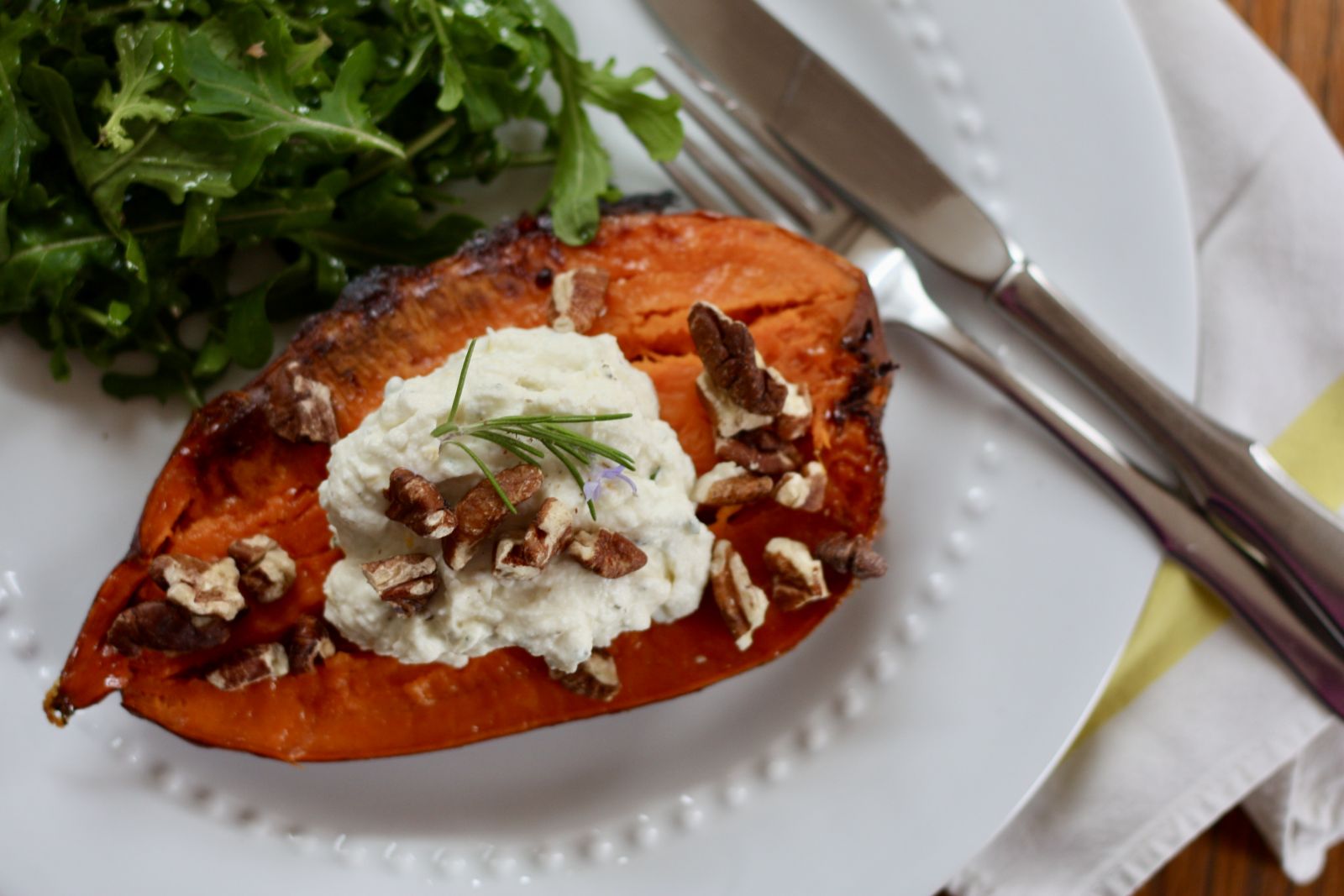An Invitation to Feel-Good Eating
By Catherine Newman
Catherine Newman shares four principles and gorgeous recipes to boost health and well-being while maximizing deliciousness. She also offers ways to adapt these recipes if you are trying to reduce carbs, fat, or sodium.
I really wanted to put together a new-year/new-you type of piece this month. Not with a recommendation that you subsist on air and water, like a houseplant. Or with the intention that you regret the cheese-and-dark-chocolate diet you may have started at the holidays, and which you enjoyed very much. (And by “you,” of course, I mean “I.”) But with some thoughts about ways to eat that boost your health and well-being, while simultaneously satisfying your palate, your wallet, and your love of beautiful things.
Too tall an order?
Well, yeah. Probably. But maybe not! Because I’m actually pretty sure you’ll fall in love with these recipes. As you’ll see, I developed each one around a particular feel-good principle, with a little explanation of the principle, and a description of how the recipe accomplishes it. But my hope is that you can apply these principles to other recipes and meals and ways of thinking about what you eat. Eating colorfully requires only that you keep an eye out for beautiful natural foods (sorry, blue Jolly Ranchers). Eating more vegetables just means shifting the proportion of food on your plate at any given meal. Eating more whole foods is easiest if you stick to the places in the store where food looks most like, well, food – an apple, say, or a chicken (believe me, if there were a Doritos tree, I’d go Doritos-picking every fall too). And portion control is just what it sounds like: instead of thinking of any particular food as off limits because of a high carb count – especially foods that are otherwise nutritious – consider simply eating less of it.
I hope you’re feeling great anyway. But please accept this invitation to feel even better.
1. Rainbow Salad with Chicken and Creamy Lemon Dressing

What: Eat Colorfully
Why: Colorful vegetables and fruits tend to be high in vitamins and nutrients. The more (and the greater variety) of them you eat, the more nutrients you get! Plus, they’re gorgeous.
How: In this huge, delicious salad, we’re focusing on sunset colors: purple cabbage, deeply pink beets, red radishes, and orange carrots – with a lemony-yellow dressing to boot! Plus salad greens, of course, and some chicken (or tofu, if you prefer) to turn it all into a complete meal. The salad is so pretty, I don’t even toss it—I just bring it to the table with the extra dressing so people can help themselves. Maybe it’s the power of suggestion or some sort of color-therapy situation, but when I eat this salad I feel completely energized! (Which you can tell, because I just used an exclamation point.)
View the recipe.
2. Big Green Stir-Fry with Garlicky Beef

What: Get More Veggies into Your Entrees
Why: Eating more vegetables is associated with greater health, so if you can load up your meals with them – squeezing in as many as you can – you’ll really up the nutritional ante. Plus, it’s a deliciously healthy way to satisfy your appetite without adding more meat.
How: This stir-fry flips the usual proportions of meat and vegetables, loading up the pan with tons of bright-green broccoli and crunchy celery and bittersweet radishes, along with some tender, garlicky beef for protein and extra deliciousness. The goal is to use about 8 cups of veggies total, and feel free to swap in other favorites: cabbage, bok choy, mushrooms, bamboo shoots, bell peppers, or even carrots. Even though there’s no black pepper in this recipe, it’s based on Su Li’s fantastic and simple “Black Pepper Beef and Cabbage Stir-Fry.” Feel free to add black pepper! Or something else spicy, such as chili-garlic sauce or sriracha. And serve it with cauliflower rice if you like.
View the recipe.
3. Smoky Squash and Chicken Wings with Kale

What: Eat More Whole Foods
Why: Whole foods – ingredients that look the way they looked in nature – contain all of the nutrients they started with, with nothing added or taken away to complicate or diminish them. When you think of whole foods, picture fruits and vegetables, meats and fish, eggs and whole milk, nuts, beans, and whole grains. Largely, these are foods that are minimally processed or packaged, if at all. To further amp up the wholeness, leave the skins on when you can, for added fiber and vitamins. (In this recipe, the skins also keep the squash from falling apart in the oven.)
How: This recipe turns three whole foods into a single scrumptious and incredibly nutrient-dense meal: well-seasoned squash and chicken wings get the sheet-pan treatment, roasting all mixed together so that the squash sizzles yummily in the juice from the chicken. Then the squash is added, still hot, to the kale, which wilts dramatically and deliciously. A squeeze of lime, and the whole thing comes together beautifully. (Pro tip: Don’t let children eat all the chicken wings while pretending not to see the salad beneath them. They’ll like the salad, they will, they just need to be encouraged.)
View the recipe.
4. Caramelized Sweet Potatoes with Lemony Herbed Ricotta
 What: Practice Portion Control
What: Practice Portion Control
Why: If you’re keeping to a low-carb diet, you might weary of eliminating some of your favorite foods – foods, such as sweet potatoes, that are actually incredibly nutritious. Eating a small amount offers the best of both worlds.
How: This easy recipe really, really makes the most of that half a sweet potato you’re going to eat! First, it’s oiled and salted, then roasted until it caramelizes in the pan, turning so deliciously sticky and sweet that even if you just ate it like this, you’d be thrilled. (This cooking method comes from my friend Maddie, and is an absolute revelation to me.) And then it gets topped with a garlicky, lemony, herb-flecked ricotta that turns that that single half a sweet potato into a rich and satisfying dinner (I like to add a simple green salad for balance). You’ll see. It’s so, so good – but not in a way that makes you need another half. Just in a way that makes you want to make it again.
View the recipe.
.jpg) About Catherine
About Catherine
Catherine loves to write about food and feeding people. In addition to her recipe and parenting blog Ben & Birdy (which has about 15,000 weekly readers), she edits the ChopChop series of mission-driven cooking magazines. This kids’ cooking magazine won the James Beard Publication of the Year award in 2013 – the first non-profit ever to win it – and a Parents’ Choice Gold Award. Her book "How to Be A Person" was published in 2020. She also helped develop Sprout, a WIC version of the magazine for families enrolled in the Special Supplemental Nutrition Program for Women, Infants, and Children (WIC), as well as Seasoned, their senior version. They distribute over a million magazines annually, through paid subscriptions, doctor’s offices, schools, and hospitals. Their mission started with obesity as its explicit focus – and has shifted, over the years, to a more holistic one, with health, happiness, and real food at its core. That’s the same vibe Catherine brings to the diaTribe column.
[Photo Credit: Catherine Newman]







